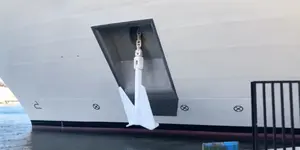Singapore is actively working to future-proof its maritime talent pipeline as the industry undergoes significant changes due to automation, artificial intelligence, and the push for sustainability. While the nation has established itself as a global maritime hub, it now faces the challenge of ensuring a skilled workforce for the evolving demands of the sector.
Key industry leaders emphasize the importance of reskilling and upskilling current employees to adapt to the rapid digitalization of maritime roles. Raymond Peter from BSM Singapore highlights collaborations with the Maritime and Port Authority (MPA) and the Singapore Maritime Foundation, which provide scholarships and pathways for students to receive both education and employment. Lorenzo Agatiello from Faststream underscores the scale of investment in developing skills focused on digitalization, AI, and decarbonization, while Demetris Chrysostomou from Columbia Shipmanagement points out that training initiatives are critical for enhancing workforce capabilities.
As automation and AI reshape job descriptions, industry experts agree that foundational skills remain crucial. Vinay Gupta from Union Marine Management stresses that aligning government, academia, and industry efforts is key to navigating this transition. Similarly, Haakon Lenz from Wilhelmsen Ship Management underscores the need for integrating these technologies into educational frameworks, ensuring a workforce ready for future challenges.
However, the maritime sector faces a dual challenge: not only attracting talent but also retaining it. Ryan Kumar from Direct Search Global warns that the industry’s ability to keep talent hinges on more than financial incentives; contemporary workers seek purpose, flexibility, and a sense of belonging in their careers.
The narrative around maritime careers is evolving, but there’s still a perception gap among young Singaporeans. Many view the industry as unappealing, even if it contributes significantly to the nation’s economy. Kumar observes that further engagement is necessary to address this visibility gap, suggesting that young people need to understand the diverse roles and opportunities available in maritime.
Initiatives like Youth@Singapore Maritime Week aim to showcase the sector’s potential, while industry leaders advocate for a shift in how maritime is branded. By emphasizing the intertwining of technology, sustainability, and diverse career paths, Singapore hopes to cultivate a modern and aspirational vision of the industry.
Despite these efforts, challenges remain. There is a critical need to enhance the perception of maritime careers to ensure the sector not only thrives technologically but also resonates with the aspirations of younger generations. As Singapore develops its maritime identity, encapsulating a narrative that intertwines its illustrious maritime history with a sustainable and tech-forward future will be essential.
Ultimately, the success of these measures will shape not only the efficiency of Singapore’s maritime operations but also its status as a true maritime nation where the industry is seen as integral, relevant, and inspiring for future generations.
Source link




